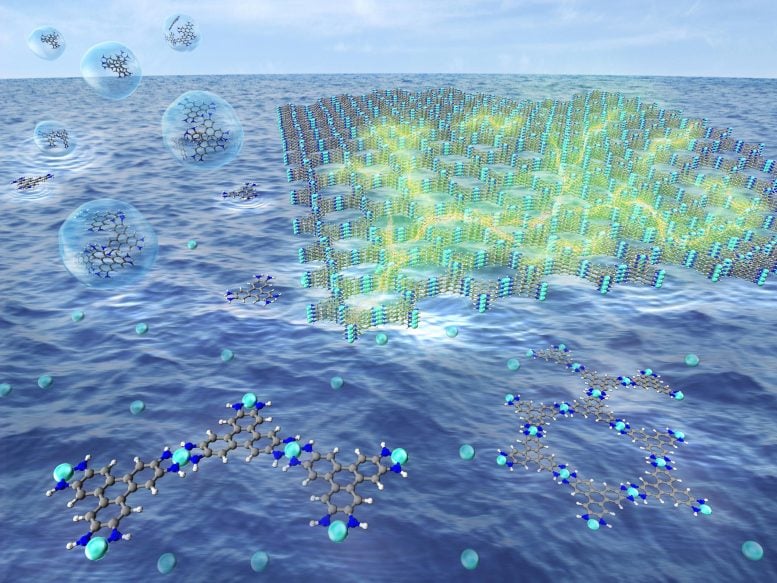
Simple spreading of droplets containing molecular components on the surface of water leads to spontaneous formation of nanostructures with very high electrical conduction. Credit: Rie Makiura, Osaka Prefecture University
Spontaneous wide-area spreading of oil on water inspires a facile energy-saving route of crafting electrically conductive nanostructures for future sensor/energy devices.
Oil and water do not mix, but what happens where oil and water meet? Or where air meets liquid? Unique reactions occur at these interfaces, which a team of researchers based in Japan used to develop the first successful construction of uniform, electrically conductive nanosheets needed for next-generation sensors and energy production technologies.
The research collaboration from Osaka Prefecture University, the Japan Synchrotron Radiation Research Institute, and the University of Tokyo published their approach today (October 28, 2021) in ACS Applied Materials & Interfaces.
“We have known for a long time that oil forms a large and uniform film on the surface of water — understanding and using this familiar phenomenon could lead to energy-saving processes,” said corresponding author Rie Makiura, Associate Professor in Department of Materials Science, Osaka Prefecture University. “By utilizing a combination of raw materials at a similar interface, we succeeded in creating functional materials with advanced three-dimensional nanostructures that conduct electricity.”
These materials are metal-organic frameworks, which are microporous and composed of metal ions and organic linkers that are highly organized. Called